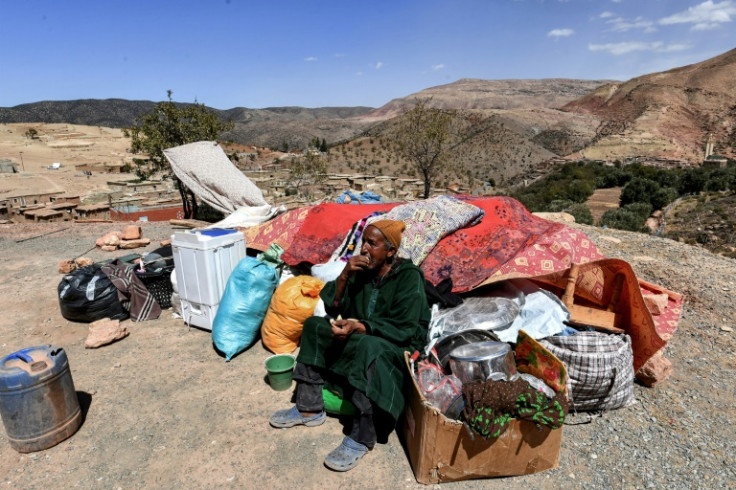Ordinary citizens are stepping in to do their bit for victims of the deadly earthquake in Morocco, after some complained that the authorities were slow to act.
Maria Boujdig lives in Agadir but is originally from Tafeghaghte, one of the villages hardest hit in mountainous Al-Haouz province, the epicentre of Friday’s quake.
She loaded her car with food and drove the more than 200 kilometres (125 miles) east to distribute it to needy villagers in the aftermath of the strongest earthquake ever to hit the North African country.
The quake killed at least 2,122 people, injured more than 2,400 others, and flattened entire villages.
Faced with the level of destruction, the insurance broker felt she had to act. “I got calls from families saying they had nothing to eat,” Boujdig told AFP. “So I spent 10,000 dirhams ($980) on food to help in my own small way.”
“The tragedy of the dead is made worse by the terrible conditions faced by the survivors,” she said.
“It’s catastrophic and serious to be hungry in these conditions. It was only natural for me to help.”
Tafeghaghte is around 60 kilometres from the tourist centre of Marrakesh and accessible only by a narrow dusty track.
In a small warehouse spared by the quake, three villagers stored packs of water, sacks of flour, tea, canned goods and cakes that Boujdig and like-minded benefactors brought to the village.
One of them, Mohammed, who asked that his last name not be used, lost his 16-year-old daughter in the tragedy.
“Twenty-four hours after it happened, we decided to take things into our own hands because there was no one else to help us,” he said.
“We made sure that everyone had something to eat.”
Mustapha El-Machmoum said: “There’s no sign of the authorities for the moment. We’re so isolated here. Without benefactors we would starve.”
The 34-year-old is barely holding it together: his mother, brother, grandfather, three cousins and the wives of two of his uncles all died in the quake.
Forty-eight hours after the earth shook, the villagers were spending their third night put in the open.
“We asked the authorities for tents yesterday, but nothing arrived,” El-Machmoum told AFP.
“We’re sleeping on the ground in the cold. Adults can cope with this, but not the children.”
Official aid had reached the village of Tikht, near Adassil around 30 kilometres southwest of Tafeghaghte, where Moroccan authorities erected bright yellow tents for quake survivors.
A volunteer, Mohamed Belkaid, drove from Marrakesh after filling his car with packs of water to distribute in the mountain villages.
“I wanted to help people affected by the earthquake. On the way, many people asked me about the situation in Tafeghaghte, so I decided to go there,” he said.
“Everyone must mobilise,” the 65-year-old said. “And that includes the authorities, but they seem to be absent.”
Help has also come from far away, from Al-Hoceima in northeast Morocco where a 2004 earthquake killed 628 people.
A group of 13 people drove more than 790 kilometres from Al-Hoceima in two vans and two cars to bring food aid to the stricken Al-Haouz villages.
“We lived through this in 2004, so it’s completely normal that we step in to help,” Said Ouael El-Haj from Beni Bouayach in Al-Hoceima province told AFP.
The group took food to the villages of Sour Tahannaout, Moulay Brahim and Assif Imigdal.
“It’s the first aid we’ve received since the earthquake,” said Mohamed Bakka, 65, from Sour Tahannaout.
In a suburb of Marrakesh, a line of small trucks formed outside a supermarket to be filled with 10-kilogram (22-pound) bags of flour, water, milk, fruit juice and other food bought by residents and delivered in overflowing carts.
Groups including Draw A Smile and Lions International have already stepped in to help victims in the devastated villages.
“We’re trying to do our best, but the needs are enormous,” said Ilias Ghassani, 20, general secretary of the local section of Lions International Red City.
AFP

AFP







